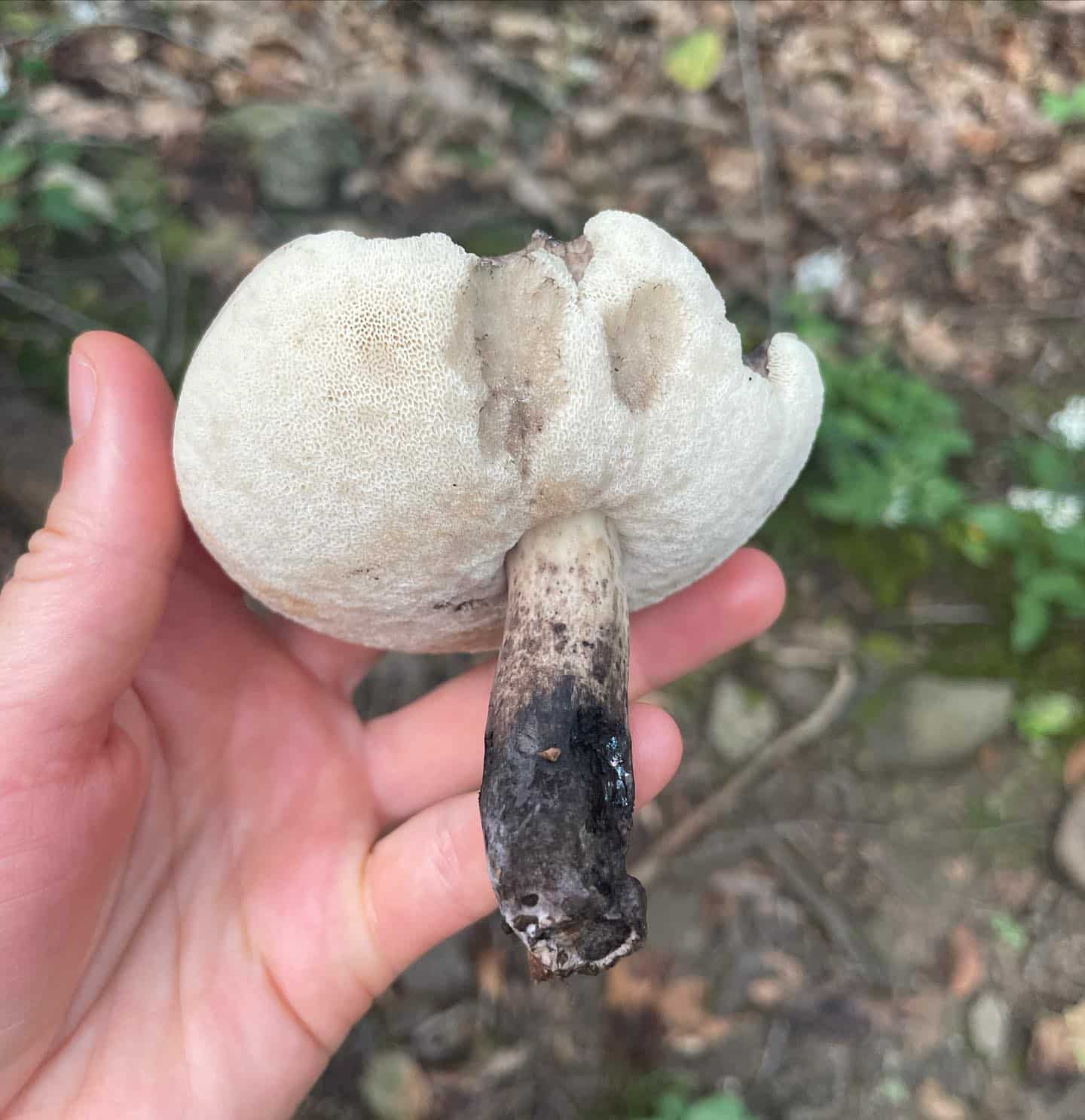Page Created by Connecticut Foraging Club
Upcoming Events | Meet the Instructors | Plant Archive | Mushroom Archive
----------------
Upcoming Events | Meet the Instructors | Plant Archive | Mushroom Archive
----------------
The Black Velvet Bolete (Tylopilus alboater) is an easy-to-identify choice edible mushroom. The mushroom can be found east of the Rocky Mountains and in Eastern Asia. It is mycorrhizal with deciduous trees, particularly oaks. In Connecticut, the mushroom can be found June-October.

The black velvet bolete has a dry cap that looks and feels like black velvet. Younger specimens will have a white bloom on the cap. The stem is the same color as the cap, turning white at the apex.
Pores are white at first, turning pinkish with age. Handling the mushroom turns the pores and flesh reddish-gray and then black. Spore print is pinkish-brown. The mushroom tends to be bug resistant.

The black velvet bolete has firm flesh and a mild nutty flavor with cheesy notes. The mushroom can be used in place of porcini in recipes. Older mushrooms can be dried and powdered for use in crusting meat.
The black velvet bolete must be differentiated from the False black velvet bolete (Tylopilus atronicotianus), which is bitter, but not poisonous. The false black velvet bolete has a brownish cap that lacks the velvety texture and a reddish-brown spore print.
--
Written by Amy Demers, founder of the Connecticut Foraging Club. To learn more about foraging in Connecticut, check out our upcoming classes.







One Response
I will say that I was not expecting more Eat the Planet at this time. I’ve been planning on going out west on a foraging trip with a pal of mine for a while. Maybe we’ll try to grab some of these if we end up in the Rockies.